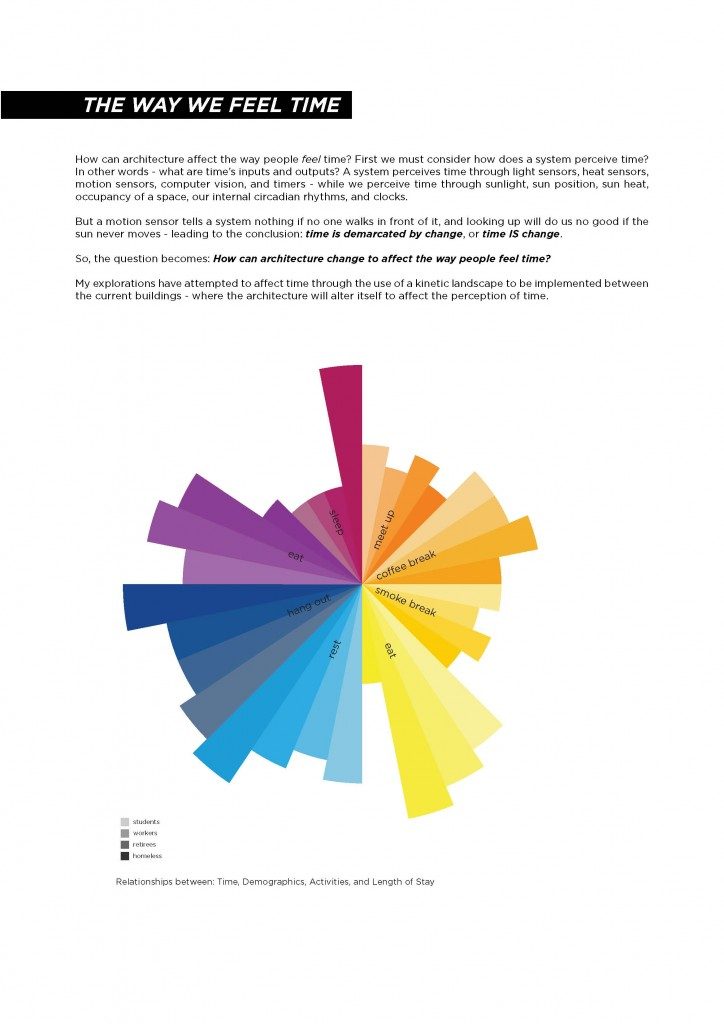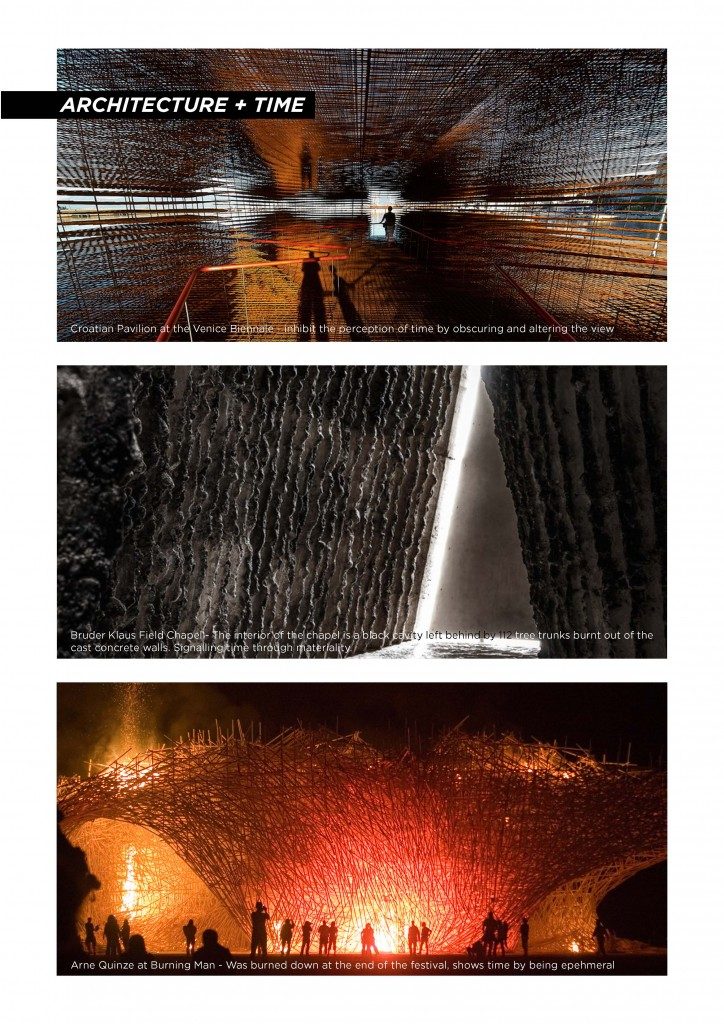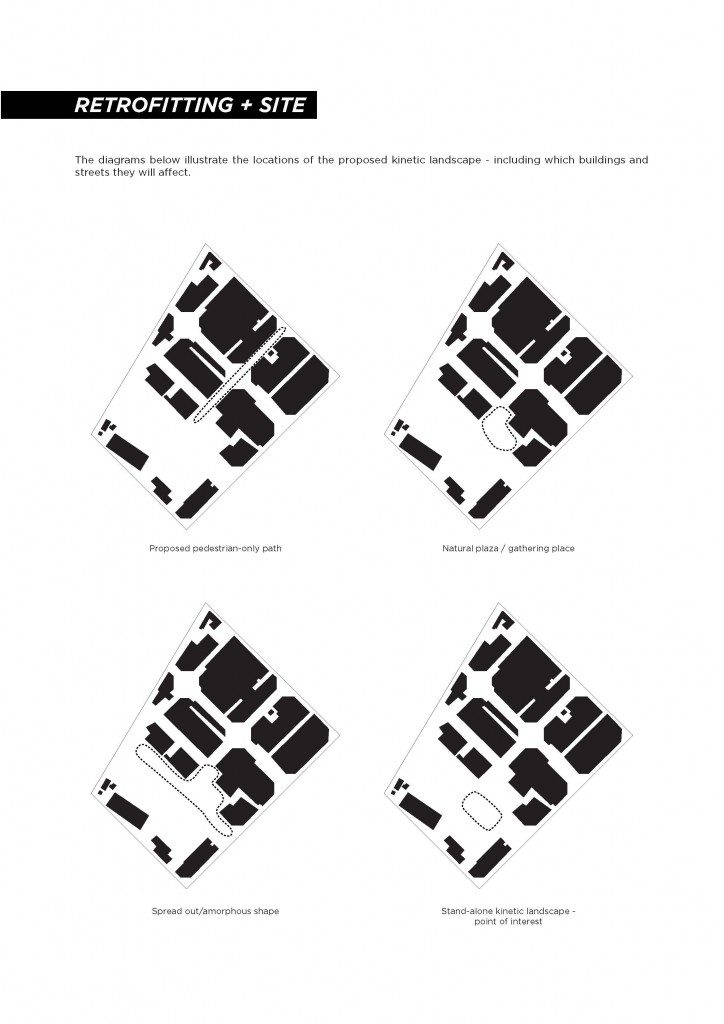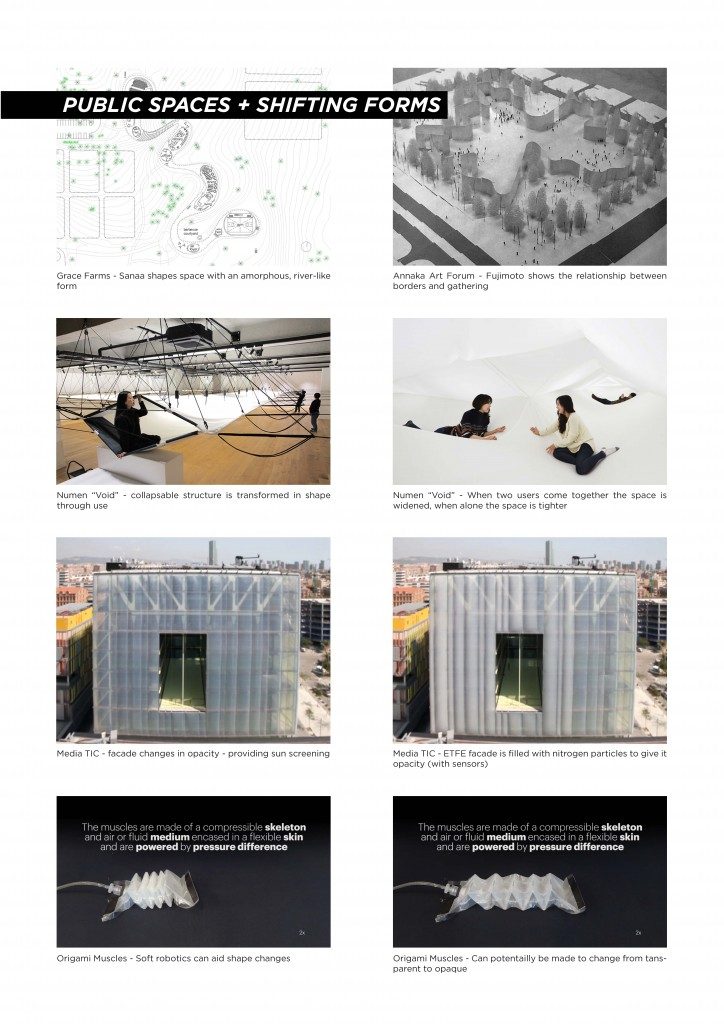</p>
How can architecture affect the way people feel time? First we must consider how does a system perceive time? In other words – what are time’s inputs and outputs?
A system perceives time through light sensors, heat sensors, motion sensors, computer vision, and timers – while we perceive time through sunlight, sun position, sun heat, occupancy of a space, our internal circadian rhythms, and clocks. But a motion sensor tells a system nothing if no one walks in front of it, and looking up will do us no good if the sun never moves – leading to the conclusion: time is demarcated by change, or time IS change. So, the question becomes: How can architecture change to affect the way people feel time?
My explorations have attempted to affect time through the use of a kinetic landscape to be implemented between the current buildings – where the architecture will alter itself to affect the perception of time.




</p>
